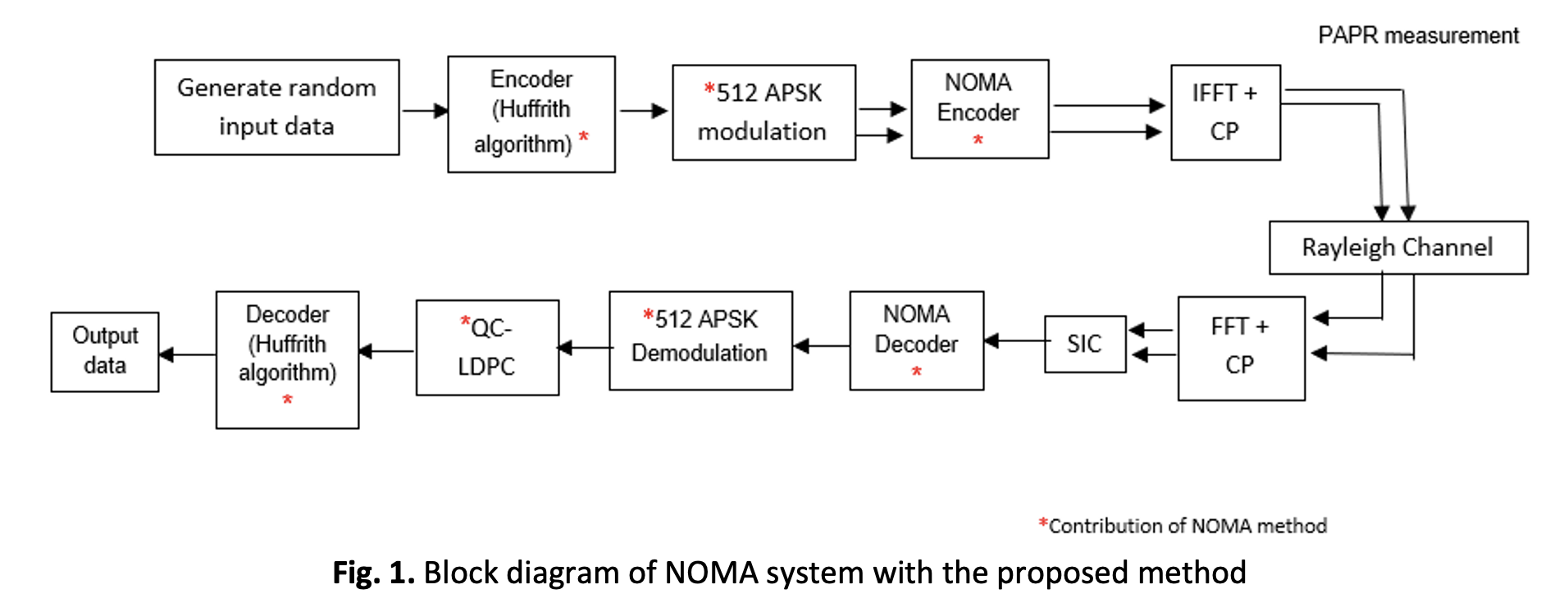Huffrith Algorithm with Quasi Cyclic Low Density Parity Check in NOMA Systems
DOI:
https://doi.org/10.37934/araset.38.1.111Keywords:
Non-Orthogonal Multiple Access (NOMA), Quasi-Cyclic Low Density Parity Check (QC-LDPC), Peak-to-Peak Average Ratio (PAPR), Huffrith Algorithm, Amplitude Phase Shift Keying (APSK)Abstract
In this paper, the high-rate Quasi-Cyclic Low-Density Parity -Check (QC-LDPC) as an error correction code is contributed for Non-orthogonal Multiple Access (NOMA) systems with high-frequency spectrum efficiency. High PAPR will affect the signal degradation and all the methods applied in the NOMA system are solving the problem of scarce time or frequency domain resources. The objectives of this paper are achieved by reducing the PAPR using Huffrith algorithms with QC-LDPC in the NOMA system. Huffrith algorithm combined with QC-LDPC to reduce the peak-to-peak average ratio in the 6G network. This method simulates using the 512 APSK modulation technique. The results were obtained by differentiating the contribution method with four types of coding techniques, which are an original data signal, Huffman, Huffrith, and Arithmetic algorithms. Besides, also differentiate three scenarios without error correction codes, LDPC codes, and QC-LDPC codes to compare which is better and more suitable using the NOMA system. Compared with different multiple access shows results that NOMA systems get highest percentage of improvement is 16.95% and 9.8 dB. Next results, seems QC-LDPC is better by getting the highest percentage of improvement is 22.31% and 9.40 dB compare with others.
Downloads





























